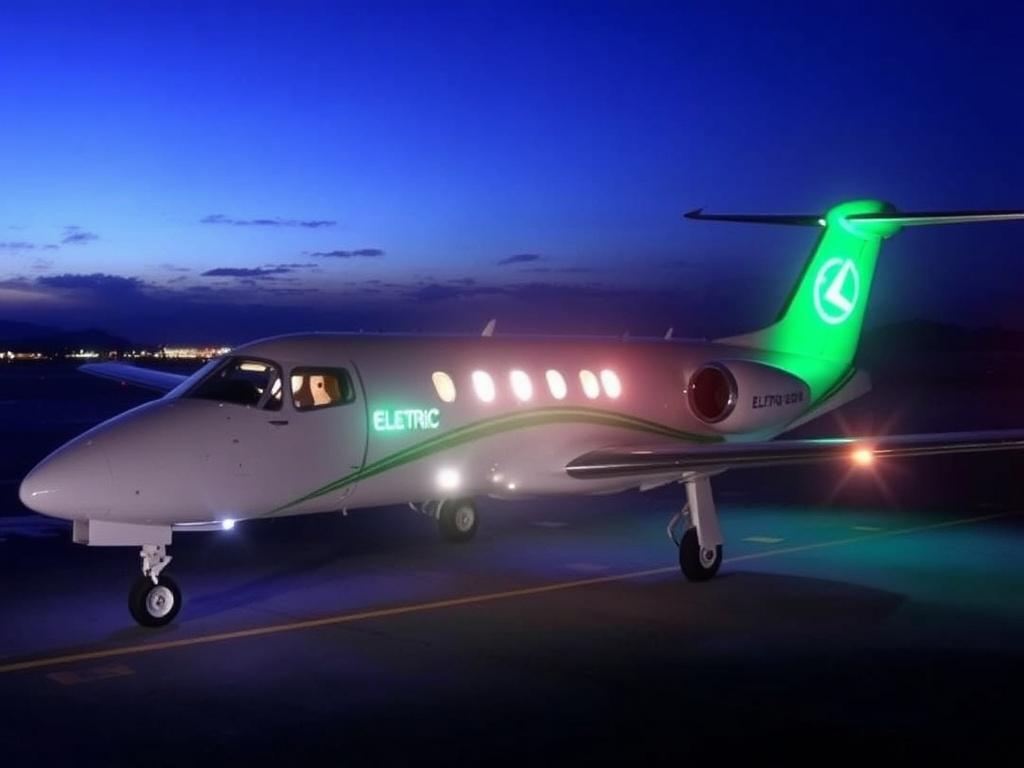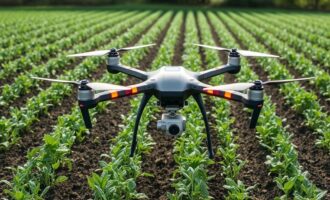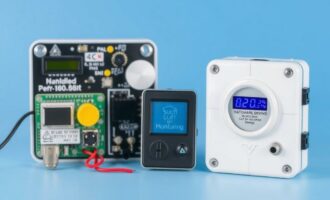- The Promise of Electric Aviation
- Understanding the Battery Challenge
- Energy Density: The Crux of the Issue
- Key Battery Types in Aviation
- Current Electric Aviation Milestones
- Electric Regional and Trainer Aircraft
- Electric Air Taxis and Urban Mobility
- Hybrid-Electric Aircraft
- Major Hurdles Ahead
- Battery Weight and Capacity
- Certification and Safety Standards
- Infrastructure Development
- Economic Viability
- Timeline: When Will Batteries Power Planes?
- Innovations Driving the Electric Aviation Revolution
- Battery Research Focus Areas
- Lightweight Materials and Aerodynamics
- Charging Infrastructure Innovations
- The Environmental Impact of Electric Aviation
- Key Players in Electric Aviation
- How Airlines are Preparing for Electric Aviation
- What Passengers Can Expect
- Conclusion
Electric aviation has long captured the imagination of innovators, environmentalists, and travelers alike. The prospect of planes powered by batteries instead of fossil fuels promises a future where air travel could become cleaner, quieter, and more sustainable. But how close are we to seeing electric planes take to the skies in a meaningful way? What technological breakthroughs still lie ahead, and what challenges must we overcome? In this article, we’ll explore the current state of electric aviation, the role that batteries play in this emerging field, and when we might realistically expect to see batteries power planes on a large scale.
The Promise of Electric Aviation
Electrification has transformed many industries, from automobiles to home energy systems, and the aviation sector is poised for its own revolution. Electric aviation could drastically reduce carbon emissions, significantly decrease noise pollution near airports, and lower operational costs for airlines through reduced fuel spending and maintenance. Unlike traditional jets powered by aviation fuel, electric aircraft rely on electricity stored in batteries, which can be sourced from renewable energy like solar or wind power, making the entire flight more environmentally friendly.
Additionally, electric propulsion allows engineers to rethink the design of planes. Electric motors are smaller, lighter, and more efficient than combustion engines, which opens up new possibilities for aircraft design and performance. For short-haul flights or urban air mobility concepts like air taxis, electric aviation presents a viable and exciting alternative. However, the question remains—when will batteries power planes widely enough to have a noticeable impact?
Understanding the Battery Challenge

The central challenge in electric aviation is energy storage—specifically, the limitations of current battery technology. Batteries, unlike traditional aviation fuels, have lower energy density, meaning they store less energy for the same weight. This limitation has historically made it difficult for electric propulsion systems to match the range and payload capacities of conventional aircraft.
Energy Density: The Crux of the Issue
To put it simply, energy density is how much energy a battery can store per kilogram or liter. Jet fuel boasts an energy density approximately 50 times higher than the best lithium-ion batteries available today. This massive difference means that carrying enough batteries to power a commercial airplane over long distances results in extremely heavy payloads, which reduces efficiency and increases energy demands.
Key Battery Types in Aviation
Electric aviation efforts have primarily focused on lithium-ion batteries due to their widespread use and proven performance. However, researchers are exploring alternative battery chemistries that promise higher energy densities and faster charging times:
| Battery Type | Energy Density (Wh/kg) | Advantages | Challenges |
|---|---|---|---|
| Lithium-Ion | 150-250 | Proven technology, good cycle life | Moderate energy density, thermal management needed |
| Lithium-Sulfur | 400-500 (theoretical) | High theoretical energy density, lightweight | Poor cycle life, stability issues |
| Sodium-Ion | 100-150 | Cost-effective, abundant materials | Lower energy density, early-stage tech |
| Solid-State Batteries | 300-500 (potential) | High energy density, safer operation | Manufacturing challenges, cost |
These advances in battery technology are crucial because any leap in energy density would enable electric aircraft to fly longer distances and carry more passengers. For now, most electric planes are limited to short routes or demo flights.
Current Electric Aviation Milestones
While full-scale, battery-powered commercial jets are not yet commercially viable, several impressive milestones have already been achieved in electric aviation. These examples show that the technology is progressing steadily.
Electric Regional and Trainer Aircraft
A few small-scale electric aircraft have been developed and flown, mostly serving as regional or trainer planes. These aircraft typically carry a handful of passengers or just a pilot and demonstrate the practical uses of battery power for aviation. For example, the Pipistrel Velis Electro is one of the world’s first fully electric two-seat planes certified for flight training. With flight times of around an hour, it highlights how electric aviation is already making headway in niche applications.
Electric Air Taxis and Urban Mobility
Urban air mobility is a burgeoning sector that aims to develop electric vertical takeoff and landing (eVTOL) aircraft to ferry passengers across cities rapidly. Companies such as Joby Aviation, Lilium, and Vertical Aerospace are racing to create electrically powered air taxis that could help reduce urban congestion. These vehicles rely on batteries for propulsion and are designed to operate on short-distance trips, typically under 100 miles, aligning well with current battery technology capabilities.
Hybrid-Electric Aircraft
One promising direction is hybrid-electric propulsion, which combines traditional jet fuel engines with electric motors powered by batteries or other energy storage systems. This approach can reduce fuel consumption and emissions while managing range and payload issues better than fully electric planes.
Major Hurdles Ahead
Before batteries can power planes on a large scale, several significant barriers must be addressed.
Battery Weight and Capacity
As mentioned, battery weight remains the biggest limitation. Increasing energy density is critical, but batteries must also be safe, cost-effective, and able to endure the extreme conditions of flight. Moreover, faster charging or quick battery swapping infrastructure must be developed to keep aircraft turnaround times competitive.
Certification and Safety Standards
The aviation industry is one of the most heavily regulated sectors, with strict certification requirements. Electric aviation must prove that battery systems are fail-safe, reliable, and able to operate safely under all expected conditions. This certification process can take years and requires rigorous testing and validation.
Infrastructure Development
Electric aircraft require new ground infrastructure for charging and maintenance. Airports would need to install high-capacity charging stations or battery swap systems and integrate renewable power to maximize environmental benefits. The scale and cost of upgrading these systems is considerable.
Economic Viability
Electric aviation must be economically feasible to gain widespread adoption. This means reducing battery costs, improving operational efficiency, and ensuring that electric flights can compete with conventional options on price, convenience, and reliability.
Timeline: When Will Batteries Power Planes?
Predicting exactly when batteries will power planes on a broad scale is challenging but not impossible. Many experts and companies believe that battery-electric propulsion will first become standard for smaller aircraft and urban air mobility within the next decade. Regional flights powered by electric or hybrid systems may follow in the 2030s.
Here is a rough projection of the electric aviation timeline:
- Now – 2025: Expansion of electric trainer aircraft, testing of electric regional planes, and development of eVTOL air taxis.
- 2025 – 2030: Entry of electric or hybrid small regional planes for short-haul flights, commercial introduction of urban air mobility services in select cities.
- 2030 – 2040: Improvements in battery technology enable longer range flights; hybrid-electric systems become common for regional and short commercial routes.
- Beyond 2040: Potential breakthroughs in solid-state batteries or alternative energy storage could allow fully electric larger aircraft, including medium-haul flights.
While these timelines are optimistic, they depend heavily on technological breakthroughs and regulatory progress.
Innovations Driving the Electric Aviation Revolution
Several exciting innovations could accelerate the adoption of battery-powered aviation.
Battery Research Focus Areas
Researchers are intensively working on next-generation battery technologies with the goals of:
- Increasing energy density without compromising safety
- Enhancing charge/discharge rates to reduce turnaround times
- Lowering production costs through new materials and manufacturing processes
- Improving cycle life to minimize battery replacements
Solid-state batteries, for example, promise safer operation by replacing liquid electrolytes with solid materials, potentially improving energy density and thermal stability.
Lightweight Materials and Aerodynamics
Another crucial piece of the puzzle is reducing overall aircraft weight through advanced materials like carbon fiber composites and optimizing aerodynamics to lower energy consumption. By combining lightweight designs with electric propulsion, manufacturers can stretch existing battery capacities further.
Charging Infrastructure Innovations
Fast-charging technologies and battery swap mechanisms are under development to minimize downtime. Some companies are exploring mobile charging systems or quick battery exchange pads that could keep electric aircraft in the air almost continuously, which is crucial for commercial viability.
The Environmental Impact of Electric Aviation
One of the biggest motivations behind battery-powered planes is their potential environmental benefit. Aviation currently accounts for about 2-3% of global carbon emissions, a figure expected to grow with increasing demand for air travel. Transitioning to electric aviation could dramatically lower emissions, especially if the electricity comes from renewable sources.
Electric aircraft also produce less noise pollution, which is a major concern in communities near airports. Quieter flights can open the door for late-night and early-morning air services without disturbing residents.
However, the environmental benefits depend on the entire lifecycle analysis—from battery production and disposal to electricity generation. Sustainable sourcing of battery materials and recycling will play key roles in ensuring that electric aviation truly delivers on its green promise.
Key Players in Electric Aviation
Several companies and organizations are leading the charge in making batteries power planes.
| Company | Focus Area | Notable Projects |
|---|---|---|
| Pipistrel | Electric Trainer Aircraft | Velis Electro – first certified electric trainer plane |
| Joby Aviation | Urban Air Mobility (eVTOL) | Electric air taxi targeting commercial launch mid-2020s |
| Eviation | Regional Electric Aircraft | Alice – electric commuter plane with 9 passengers |
| Airbus | Hybrid-electric and electric aircraft | ZEROe concepts exploring hybrid and hydrogen-electric options |
| Vertical Aerospace | Electric VTOL | Va-1X – designed for zero-emission urban mobility |
These innovators push boundaries and collaborate closely with battery manufacturers, regulators, and airlines to bring electric aviation closer to reality.
How Airlines are Preparing for Electric Aviation
Airlines and airports are increasingly exploring electric aircraft as part of their long-term sustainability strategies. Some are investing in research partnerships, testing electric or hybrid aircraft on short routes, or planning infrastructure upgrades.
For instance, regional carriers with shorter haul flights are ideal candidates to pilot electric aircraft since their routes fit within current battery range limits. By adopting electric planes first in smaller markets, airlines can reduce emissions and costs while gaining valuable operational experience.
What Passengers Can Expect
When batteries finally power planes on a larger scale, passengers may notice several differences:
- Quieter Flights: Electric motors generate far less noise than jet engines, improving comfort during takeoff and landing.
- Cleaner Experience: Reduced emissions mean improved air quality around airports and fewer climate impacts.
- Possible New Routes: Short-range electric planes might open up regional or city center-to-city center connections unavailable today.
- Potential for Faster Boarding: Reduced fuel handling and new charging processes could streamline ground operations for some flights.
While longer flights will likely remain conventional for the foreseeable future, electric aviation offers a glimpse of a future where cleaner, more efficient, and more versatile air travel is the norm.
Conclusion
Electric aviation powered by batteries holds tremendous promise to transform the way we fly, offering a greener, quieter, and potentially more cost-effective alternative to traditional jet fuel-powered aircraft. While significant technical and economic challenges remain—primarily centered around improving battery energy density, safety, and cost—the field is advancing rapidly. Small electric planes are already flying, urban air mobility concepts are close to commercial operation, and hybrid-electric aircraft are emerging on regional routes. The timeline for widespread battery-powered flight points towards the 2030s and beyond for mainstream adoption, but continued innovation in batteries, materials, and infrastructure could accelerate this revolution. Ultimately, when batteries do power planes at scale, they will not only reshape aviation but also contribute meaningfully to global efforts to reduce carbon emissions and promote sustainable transportation for future generations.
Как вам статья?







